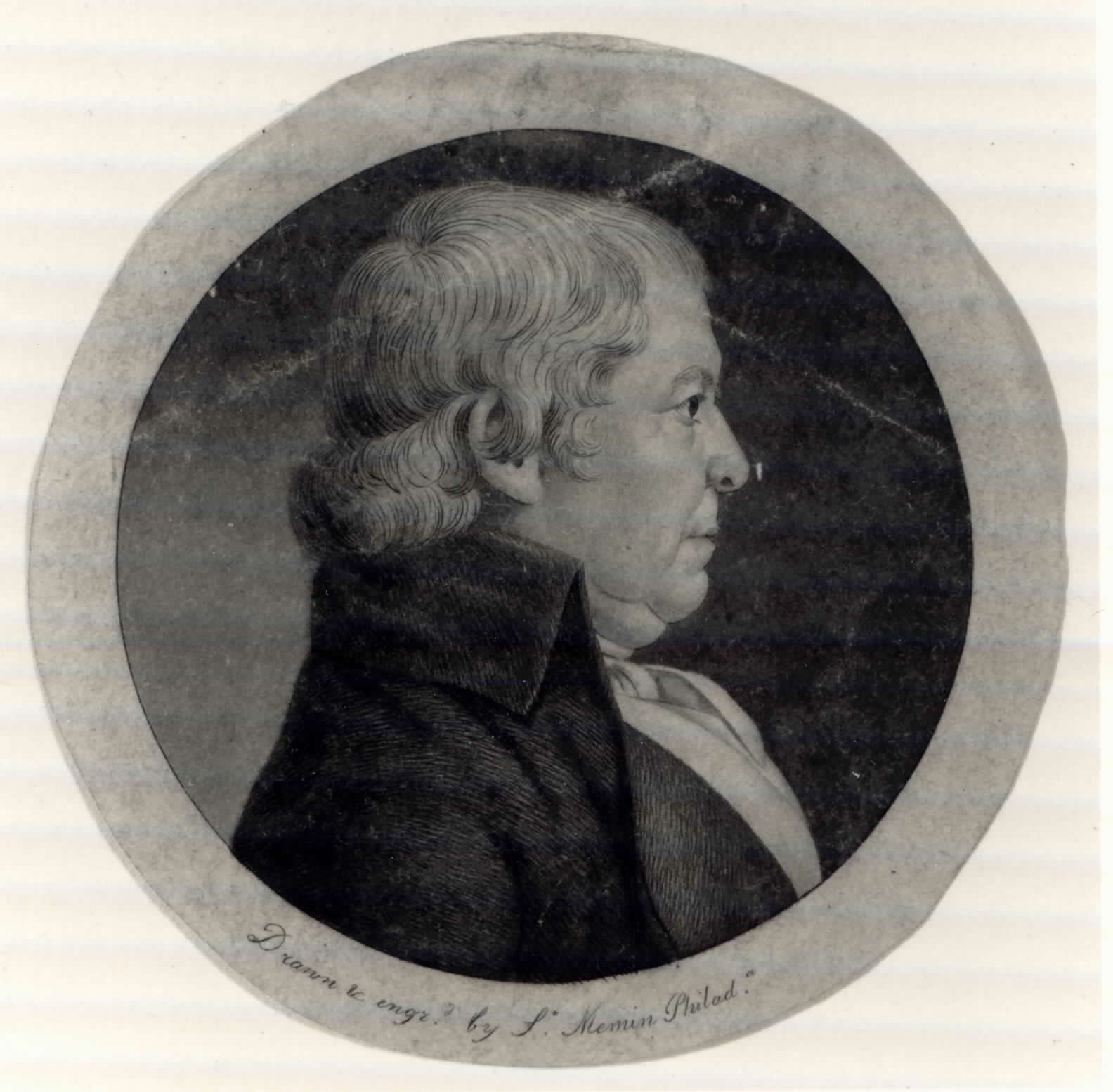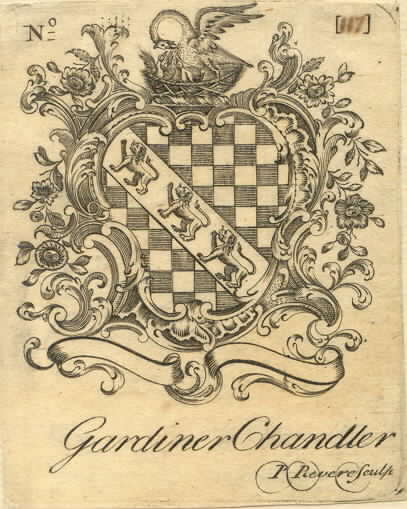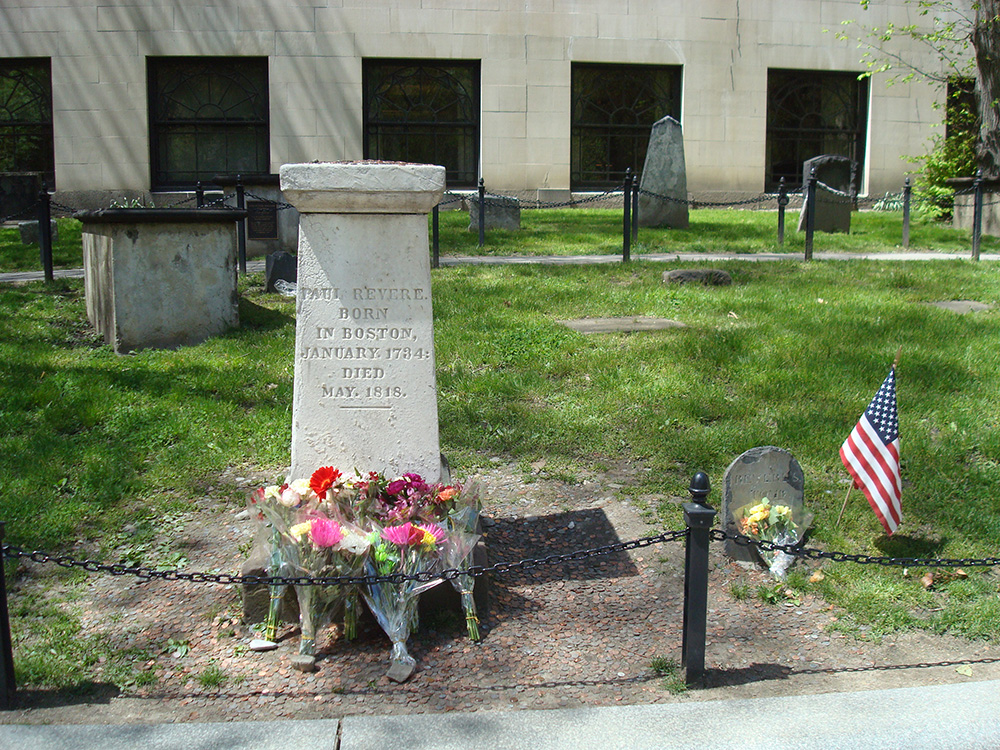
Paul Revere Biography
Henry Wadsworth Longfellow’s poem “Paul Revere’s Ride,” written in 1860 and published in 1861 in the Atlantic Monthly, transformed Paul Revere from a relatively obscure, although locally known, figure into a national folk hero. As a result, most people know him only for his famous ride to Lexington on the night of April 18-19, 1775. Revere’s life, however, was a long and productive one, involving industry, politics, and community service.
Paul Revere’s Early Life
Paul was educated at the North Writing School and learned the art of gold and silversmithing in his father’s shop. When Paul was nineteen (and nearly finished with his apprenticeship) his father died, leaving Paul as the family’s main source of income. Two years later, in 1756, Revere was commissioned as a second lieutenant in the Massachusetts artillery, and sent to fight the French in upstate New York. When he returned in the Fall of 1756 he began in earnest to build the family silver business.
In August, 1757, Revere married Sarah Orne. Together, they had eight children. Soon after Sarah’s death in 1773, Revere married Rachel Walker with whom he also had eight children.
Revere’s Family and Ancestry.
Revere Silversmith / Craftsman
Revere’s primary vocation was that of a goldsmith, a trade he learned from his father. Although goldsmiths worked in both gold and silver, they are generally referred to today as silversmiths. Revere did not work in pewter. His silver shop was the cornerstone of his professional life for more than 40 years. As the master craftsman, Revere was responsible for both the workmanship and the quality of the metal alloy used. He employed numerous apprentices and journeymen. His shop produced pieces ranging from simple spoons to magnificent tea sets. His work was well regarded during his lifetime and is highly prized today.

Revere supplemented his income with other business ventures. During the economic depression that followed the French and Indian War, Revere began working as a copperplate engraver. He produced illustrations for books and magazines, business cards, political cartoons, bookplates, a song book, and bills of fare for taverns. He also practiced as a dentist from 1768 to 1775, to the extent that his time and skills allowed. He cleaned teeth, fastened in false teeth and sold toothpaste. Contrary to popular myth, he did not make George Washington’s false teeth. There is no evidence he made full sets of dentures.
Political Activities / Revolutionary War
Revere’s political involvement arose through his connections with members of local organizations and his business patrons. As a member of the Masonic Lodge of St. Andrew, he was friendly with activists like Dr. Joseph Warren. In the year before the Revolution, Revere gathered intelligence by “watching the Movements of British Soldiers,” as he wrote in a 1798 account of his ride. He was a courier for the Boston Committee of Correspondence and the Massachusetts Committee of Safety, riding express to the Continental Congress in Philadelphia. As a member of the North Caucus, Revere took part in meetings that planned the destruction of East India Company Tea in December 1773. The next day, he spread the word of the Boston Tea Party to New York and Philadelphia.
The Midnight Ride
The Midnight Ride, including map and images.
At 10 pm on the night of April 18, 1775, Revere received instructions from Dr. Joseph Warren to ride to Lexington to warn John Hancock and Samuel Adams of the British approach. Following the Battles of Lexington and Concord, Revere and his family lived in Watertown, Massachusetts, just outside of Boston. During this time Revere printed paper currency for the Massachusetts government, and helped to acquire powder and ammunition for the colonial troops. Revere went on to serve as lieutenant colonel in the Massachusetts State Train of Artillery and commander of Castle Island in Boston Harbor. Revere and his troops saw little action at this post, but they did participate in minor expeditions to Newport, Rhode Island and Worcester, Mass. Revere’s rather undistinguished military career ended with the failed Penobscot expedition in 1779.
In the summer of 1779, Paul Revere was appointed commander of the field artillery in a large multi-colony expedition sent to the Maine district of Massachusetts (now the state of Maine) to capture a small British fort at Castine, near the mouth of the Penobscot River. Lack of cooperation between the naval and land forces virtually guaranteed that little would be accomplished before a British relief squadron arrived and trapped the American expedition in Penobscot Bay. An orderly retreat up the Penobscot River quickly turned into a panicked rout, with vessels exploding, being run aground, and scuttled to prevent their falling into enemy hands. The American land forces became scattered and most made their way back to Boston on foot.
Accused of cowardice and insubordination, Revere was unhappy with the results of a Board of Inquiry, which did not rule on his case one way or the other. Determined to receive a proper hearing, Revere petitioned the Massachusetts government seven times for a court-martial before one was finally convened in February of 1782. The court-martial ruled that Revere be found not guilty of all charges, although the language in the second charge was somewhat equivocal. Revere accepted the result as a vindication of his honor, and returned to his business activities.
Lecture all about Paul Revere’s court-martial.
Paul Revere Industrialist – Post War Businesses
Revere expanded his business interests in the years following the Revolution. His plan was to turn the day-to-day operations of his silver shop over to his oldest son, Paul, Jr. and use the profits to invest in new businesses. From 1783 to 1789 he operated a hardware store in downtown Boston where he sold locally made and imported English goods, including hammers, chisels, ink stands, looking glasses, and rolls of wallpaper. At times he operated his silver shop and hardware store at the same location. By 1788 he had opened a foundry which supplied bolts, spikes, and nails for shipyards in Boston and elsewhere (including brass fittings for USS Constitution), produced cannons of various sizes and, after 1792, cast bells. One of his largest bells still rings in Boston’s Kings Chapel.
Concerned that the United States had to import sheet copper from England, Revere opened the first successful copper rolling mill in North America in 1801. He provided copper sheeting for the dome of the new Massachusetts State House in 1802, and the hull of USS Constitution when it was re-coppered in 1803. Revere Copper and Brass, Inc., the descendent of Revere’s rolling mill, is best known for “Revere Ware” copper-bottomed pots and pans. Revere Ware is now manufactured by a different company.
Details on Revere’s other businesses.
Community Involvements
Revere’s community and social involvements were extensive. He was an active Freemason for many years, beginning in 1760, holding several offices in St. Andrew’s and Rising States Lodges. He also served as Grand Master of the Massachusetts Grand Lodge for three years in the 1790s. A member of the Massachusetts Charitable Mechanics Association, Revere also served as the association’s first president. Founded in 1794, the group was an organization of artisans and small businessmen who sought to improve the conditions under which their peers worked, and aided members in “distressed” circumstances. Revere also served as Suffolk County Coroner for several years in the 1790s, and as President of Boston’s Board of Health in 1799 and 1800.
Last Years
In 1811, at the age of 76, Paul Revere retired and left his well-established copper business in the hands of his son Joseph Warren Revere and two of his grandsons. Revere seems to have remained healthy in his final years, despite the personal sorrow caused by the deaths of his wife Rachel and son Paul in 1813. Revere died of natural causes on May 10, 1818 at the age of 83, leaving five children, several grandchildren, and many great-grandchildren. The son of an immigrant artisan, not born to wealth or inheritance, Revere died a modestly well-to-do businessman and a popular local figure of some note. An obituary in the Boston Intelligencer commented, “seldom has the tomb closed upon a life so honorable and useful.” Paul Revere is buried in Boston’s Granary Burying Ground.

